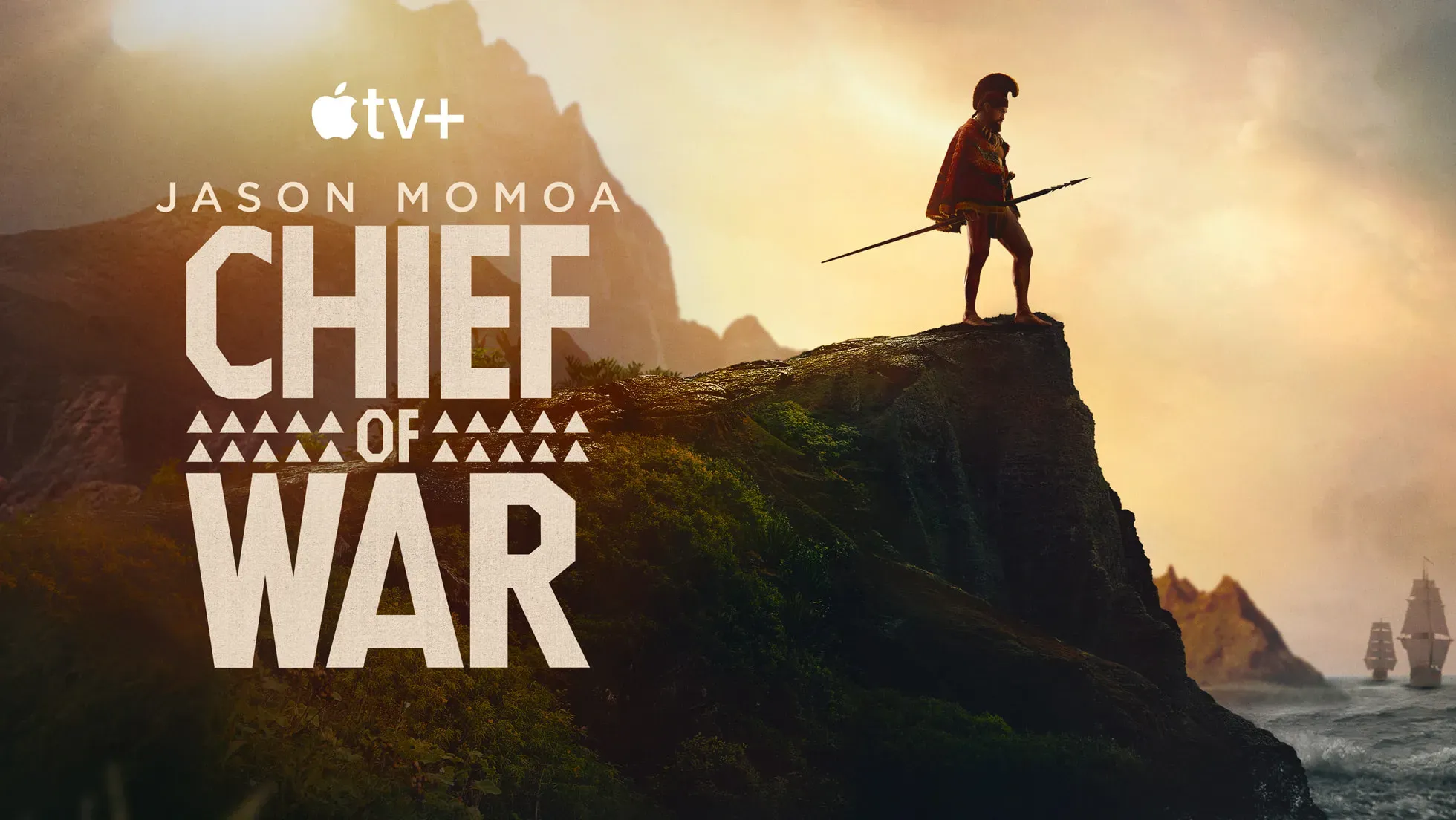The Apple TV+ series **Chief of War**, starring Jason Momoa, delves into a pivotal chapter in Hawaiian history that many may not be familiar with. Set in the late 18th century against the backdrop of the Wars of Hawaiian Unification, this gripping narrative showcases the struggle between various island kingdoms for supremacy. With its stunning visuals and heartfelt indigenous storytelling, **Chief of War** honors the complex legacy of figures like Kamehameha the Great, a leader whose ambitions shaped the archipelago we know today. Not only does this series entertain, but it also educates viewers about the little-known truths behind Hawaii’s past. Join Momoa and a talented cast as they bring to life a story of conflict, aspiration, and the fierce spirit of the Hawaiian people.
In exploring the narrative presented in **Chief of War**, one encounters an intense portrayal of Hawaiian heritage and its rich, tumultuous history. This Apple TV series poignantly illustrates the feudal conflicts that arose during the period of Hawaiian unification, emphasizing the captivating saga of its warriors and rulers. By threading together elements of indigenous culture, the work vividly resurrects the lives of historical figures like Kamehameha the Great. Apart from being an action-packed epic, it serves as an insightful commentary on the challenges faced by native populations in the face of colonization. Both educational and thrilling, this show invites audiences to engage deeply with the stories of a land that holds an exceptional place in the Pacific.
The Significance of Hawaiian History in Chief of War
The Apple TV+ series Chief of War dives deep into Hawaiian history, capturing a tumultuous period marked by conflict and the desire for unification. This dynamic backdrop highlights the importance of storytelling in preserving cultural legacies, particularly for indigenous peoples. By focusing on the late 18th century, the series not only chronicles the rise of Kamehameha the Great but also sheds light on the complexities of Hawaiian lore that shaped the islands long before colonial presence. It serves as a reminder of the rich tradition of narratives among Hawaiians, reinforcing the significance of remembering and honoring one’s roots through powerful and engaging storytelling.
Hawaiian history is often underrepresented in mainstream media, making Chief of War a pivotal narrative that stands out for both its historical accuracy and its gripping dramatization. The series takes viewers on a historical journey, educating them about the sociopolitical structures of Hawaiian chiefdoms, including the struggle for power among various kingdoms. As we watch Jason Momoa and the talented cast bring these indigenous tales to life, we are reminded of the importance of representation and the need for more narratives that honor various cultures and histories.
Exploring the Characters of Chief of War: A Closer Look
Central to the narrative of Chief of War are the compelling characters that represent Hawaii’s vibrant history. Jason Momoa plays Kaʻiana, a nobleman whose ambition drives much of the conflict depicted in the series. His character is crafted with the depth needed to understand the motivations behind the rivalry with Kamehameha I, the series’ antagonist. Both characters offer a glimpse into the complexity of leadership in a time marked by violence and ambition, showcasing how personal vendettas were intricately tied to the fate of entire chiefdoms. Momoa’s portrayal, enriched by his own Hawaiian heritage, adds authenticity and resonance to the story.
Another key player is Kamehameha I, the legendary warrior and ruler who ultimately sought to unify the islands. The dynamic between Kaʻiana and Kamehameha reflects larger themes of power, loyalty, and betrayal in Hawaiian history. This nuanced representation of historical figures allows viewers not only to engage with the characters on an emotional level, but also to ponder the real-life implications of their actions. By highlighting these figures in Chief of War, the series constructs a narrative that is both thrilling and educational, bringing to light the historical significance behind their legendary battles.
Indigenous Storytelling: A Passion Project for Jason Momoa
Chief of War is not just another historical drama; it represents a significant commitment to indigenous storytelling, a passion that drives Jason Momoa and co-creator Thomas Pa’a Sibbett. The project aims to give voice to Hawaiian stories that have been overlooked or misrepresented in the past. By intertwining personal narratives with historical fact, the series reflects a desire to share the rich, diverse culture of Hawaii with a broader audience. This adherence to authenticity not only enriches the viewing experience but also fosters a greater appreciation of Hawaiian identity and history.
Momoa’s involvement transcends mere performance; it embodies a cultural renaissance that seeks to reclaim and celebrate Hawaiian narratives through a modern lens. By collaborating with a predominantly Polynesian cast and crew, Chief of War reinforces the importance of representation in film and television. This attention to detail in casting and storytelling illuminates the complexities faced by indigenous peoples, proving that the past, present, and future can be intricately woven together in a way that honors tradition while engaging contemporary audiences.
The Themes of Power and Conflict in Chief of War
At its core, Chief of War explores the theme of power—how it is acquired, maintained, and lost. The series portrays the brutal realities of the 18th-century Hawaiian landscape, where rival chiefs battled for dominance amid shifting allegiances and treachery. This struggle for power serves as a catalyst for conflict, reflecting the broader human themes of ambition and rivalry. As viewers witness the violent clashes between Kaʻiana and Kamehameha, they are confronted with the harsh truths of history that shaped the Hawaiian Islands into what they are today.
Additionally, the theme of conflict extends beyond mere physical battles; it touches on the internal struggles faced by the characters as they navigate loyalty, betrayal, and the burdens of legacy. This multifaceted portrayal enriches the narrative, allowing viewers to understand that the true cost of power is often paid in blood and sacrifice. Chief of War delves into these themes with sophistication, making it a potent reminder of the complexities of leadership and the tumultuous path towards unity within a fractured society.
Hawaiian Unification: The Story Behind King Kamehameha
The story of Chief of War culminates in the historical saga of King Kamehameha, who played a crucial role in the unification of the Hawaiian Islands. This narrative arc captures not only his ambition but also the socio-political landscape of 18th-century Hawaii. As viewers delve deeper into Kamehameha’s rise, they witness how his vision for a unified kingdom stands against the backdrop of tribal conflicts and competing loyalties. The portrayal of this era provides vital context for understanding the eventual formation of the Kingdom of Hawaii and the implications it had for its people.
Kamehameha’s legacy is one of strength and resilience, but also of the profound complexities that accompany leadership. Chief of War emphasizes the historical significance of his conquests while also exploring the human aspects of his character, portraying him as both a ruthless warrior and a visionary leader. This duality is what makes the series resonate—it mirrors the intricacies of real-life leadership in times of significant change and upheaval. Through Kamehameha’s eyes, we gain insight into the sacrifices made for unity and the impact that such decisions have on future generations.
The Visual and Auditory Experience of Chief of War
Beyond its compelling narrative, Chief of War captivates viewers with its stunning visuals and immersive sound design. The cinematography captures the breathtaking natural beauty of Hawaii, from its lush landscapes to its dramatic coastal scenes, reminiscent of nature documentaries like Planet Earth. These rich visual elements are more than just aesthetic; they play an essential role in grounding the narrative within the distinct cultural and environmental context of Hawaii. Watching the series becomes an experience—viewers are drawn into the world of the Hawaiian Islands with each frame, further enhancing the storytelling.
Moreover, the series uses sound effectively to evoke emotions and enhance the narrative. The score complements the sweeping visuals by weaving traditional Hawaiian music with dramatic undertones, creating an auditory landscape that resonates with viewers. This blend of sound and spectacle draws audiences into the heart of Hawaiian history, inviting them to feel the weight of the story while forging a deeper connection to the characters and their struggles. The combination of stunning visuals and engaging sound design distinguishes Chief of War as a powerhouse in storytelling, promising to leave a lasting impression.
Should You Watch Chief of War? A Viewer’s Guide
Given its unique portrayal of Hawaiian history and rich storytelling, Chief of War is a must-watch, especially for viewers seeking narratives that deviate from mainstream representations. With Jason Momoa’s magnetic performance and the series’ commitment to indigenous perspectives, it’s a compelling depiction of historical events that still resonate today. For fans of epic historical dramas, the series offers action, intrigue, and a glimpse into the complexities of human relationships amid the backdrop of significant cultural conflict.
However, potential viewers should be prepared for the intense themes and graphic representations of the violent clashes depicted. Chief of War does not shy away from the brutal realities of its historical context, making it essential to approach with an understanding of the sacrifices and struggles depicted. If you appreciate thorough character development, authenticity in storytelling, and visually stunning narratives, then this Apple TV+ series is undoubtedly one to add to your viewing queue.
The Legacy of Chief of War: Influencing Future Storytelling
As Chief of War gains popularity, it sets a precedent for future storytelling that centers around indigenous cultures and narratives. The success of the series highlights the demand for authentic representations of histories that have often been overshadowed or distorted. By embracing Hawaiian history and mythology, the series encourages producers, directors, and writers to seek out untold stories from marginalized communities and bring them to mainstream audiences. This ripple effect can potentially reshape the landscape of television and film, paving the way for a more diverse array of narratives that educate and inspire.
Beyond its immediate acclaim, Chief of War has the potential to spark conversations about representation and cultural heritage in media. As discussions around the importance of indigenous storytelling continue to grow, the series invites audiences to engage thoughtfully with the stories of diverse cultures. By fostering awareness and appreciation of Hawaiian history, Chief of War contributes to a larger movement calling for greater authenticity in representation, encouraging storytellers to honor the legacies of those who came before them while shaping narratives for generations to come.
Frequently Asked Questions
What is the significance of Jason Momoa’s role in Chief of War?
In Chief of War, Jason Momoa plays the character Kaʻiana, a nobleman from the Big Island of Hawaii. His role is significant as it represents the indigenous story of Hawaiian history, highlighting the brutal conflicts and aspirations for unification during the late 18th century. Momoa, as co-creator, ensures the series authentically reflects Hawaiian heritage and storytelling.
How does Chief of War depict Kamehameha the Great’s character?
Chief of War presents Kamehameha the Great as a formidable leader and warrior who is determined to unify the Hawaiian islands. Portrayed by Kaina Makua, Kamehameha’s character is depicted with a blend of strength and arrogance, reflecting historical accounts that show his ambition and tactical prowess during the Wars of Hawaiian Unification.
What themes are explored in the Apple TV series Chief of War?
Chief of War explores themes of power, conflict, and indigenous identity against the backdrop of Hawaiian history. It highlights the violent struggles among different chiefdoms before unification under Kamehameha, illustrating the impact of colonization and the importance of cultural heritage, all while maintaining an engaging narrative.
Where can I watch Chief of War featuring Jason Momoa?
You can watch Chief of War exclusively on Apple TV+, where it debuted on August 1, 2025. The series’ lush visuals and intense storytelling make it a must-see for those interested in Hawaiian history and indigenous perspectives.
What real historical events inspire the plot of Chief of War?
Chief of War is inspired by the real historical events surrounding the Hawaiian Unification wars from the late 18th century. It depicts key figures like Kamehameha the Great and his cousin Kaʻiana as they navigate rivalries and conflicts, ultimately leading to the formation of the Kingdom of Hawaii.
How does Chief of War celebrate Hawaiian heritage and storytelling?
The series celebrates Hawaiian heritage by showcasing indigenous storytelling through its plot, characters, and cultural representations. Co-created by Jason Momoa, Chief of War emphasizes authentic experiences and narratives that resonate with the historical struggles and triumphs of the Hawaiian people.
Is Chief of War suitable for viewers interested in historical dramas?
Yes, Chief of War is highly suitable for fans of historical dramas as it combines action, rich visuals, and a compelling narrative rooted in Hawaiian history. Viewers who enjoy epic tales of conflict and cultural exploration will likely find this series captivating.
What unique visual elements can I expect from Chief of War?
Chief of War features stunning visuals that highlight the natural beauty of Hawaii, with sweeping landscapes and action-packed scenes. The series utilizes cinematic techniques to bring the historical setting to life while emphasizing the dramatic stakes of its narrative.
| Key Point | Details |
|---|---|
| Premise of Chief of War | The series depicts Hawaiian history from 1782 to 1810, focusing on conflicts among chiefdoms and the quest for unification amidst colonization threats. |
| Main Characters | Kaʻiana, played by Jason Momoa, and Kamehameha I, are central figures, representing the power struggles among Hawaiian leaders during this era. |
| Historical Context | The background includes the existence of autonomous chiefdoms (Mokus) and a feudal hierarchy, leading to bloody conflicts over leadership. |
| Climactic Conflict | The Battle of Moku‘ōhai in 1782, marking a significant event where Kaʻiana is killed and Kamehameha solidifies his power to unify Hawaii. |
| Visuals and Themes | Known for stunning visuals and a focus on the indigenous perspective, the series features action sequences and an authentic portrayal of Hawaiian culture. |
Summary
Chief of War reveals the complex and often brutal history of Hawaii, offering a compelling narrative that highlights the struggle for unification and power within the islands. Chief of War not only captures the dramatic conflicts of its era but also presents an important indigenous perspective that is often overlooked in historical storytelling. With remarkable visuals and strong performances, this Apple TV+ series is a captivating journey into the past that deserves to be seen.



